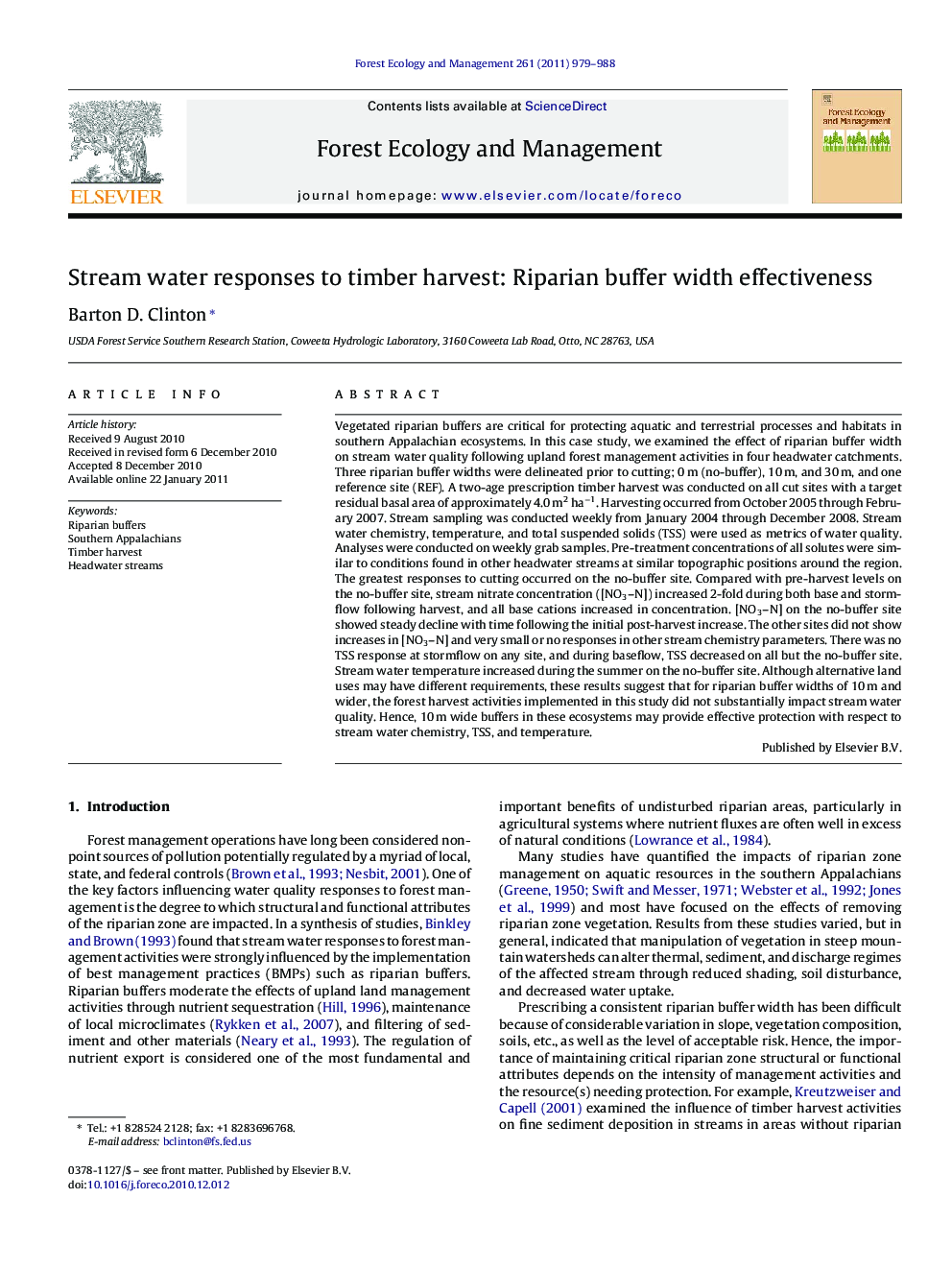| کد مقاله | کد نشریه | سال انتشار | مقاله انگلیسی | نسخه تمام متن |
|---|---|---|---|---|
| 88238 | 159292 | 2011 | 10 صفحه PDF | دانلود رایگان |

Vegetated riparian buffers are critical for protecting aquatic and terrestrial processes and habitats in southern Appalachian ecosystems. In this case study, we examined the effect of riparian buffer width on stream water quality following upland forest management activities in four headwater catchments. Three riparian buffer widths were delineated prior to cutting; 0 m (no-buffer), 10 m, and 30 m, and one reference site (REF). A two-age prescription timber harvest was conducted on all cut sites with a target residual basal area of approximately 4.0 m2 ha−1. Harvesting occurred from October 2005 through February 2007. Stream sampling was conducted weekly from January 2004 through December 2008. Stream water chemistry, temperature, and total suspended solids (TSS) were used as metrics of water quality. Analyses were conducted on weekly grab samples. Pre-treatment concentrations of all solutes were similar to conditions found in other headwater streams at similar topographic positions around the region. The greatest responses to cutting occurred on the no-buffer site. Compared with pre-harvest levels on the no-buffer site, stream nitrate concentration ([NO3–N]) increased 2-fold during both base and stormflow following harvest, and all base cations increased in concentration. [NO3–N] on the no-buffer site showed steady decline with time following the initial post-harvest increase. The other sites did not show increases in [NO3–N] and very small or no responses in other stream chemistry parameters. There was no TSS response at stormflow on any site, and during baseflow, TSS decreased on all but the no-buffer site. Stream water temperature increased during the summer on the no-buffer site. Although alternative land uses may have different requirements, these results suggest that for riparian buffer widths of 10 m and wider, the forest harvest activities implemented in this study did not substantially impact stream water quality. Hence, 10 m wide buffers in these ecosystems may provide effective protection with respect to stream water chemistry, TSS, and temperature.
Research highlights▶ In this study I address the issue of riparian buffers for southern Appalachian headwater streams. ▶ In this study I examined the effectiveness of several riparian buffer widths. ▶ Timber harvesting was conducted using cable yarding technology. ▶ Stream water chemistry, temperature, and TSS responses were compared among sites. ▶ Buffers of 10 m and wider may be adequate for water quality protection in these ecosystems.
Journal: Forest Ecology and Management - Volume 261, Issue 6, 15 March 2011, Pages 979–988